I am building a simple buck converter circuit with a current-mode control IC, the UC3843.
In the application note of the UC3843, a sample circuit is given:
I am completely clueless about how these values should be set up. Also, is this even the correct circuit to follow?
I want an oscillating frequency of 100 kHz, which this circuit includes. Desired input voltage 24 V; desired output voltage 6 V; desired output current 1 A.
